
Journal of Instrumentation
Scope & Guideline
Unveiling cutting-edge discoveries in measurement techniques.
Introduction
Aims and Scopes
- Instrumentation Development:
Research articles that present new technologies or improvements in existing instrumentation systems, including detectors, readout systems, and signal processing techniques. - Application in High-Energy Physics:
Papers that explore instrumentation used in particle physics experiments, including design and operational studies related to detectors at particle accelerators and collider experiments. - Radiation Detection and Dosimetry:
Studies focused on the development and characterization of detectors for measuring various types of radiation, including gamma, neutron, and charged particle detection. - Medical Imaging Technologies:
Research on the application of instrumentation in medical imaging, including advancements in PET, CT, and other imaging modalities. - Computational Methods in Instrumentation:
Articles that utilize simulations, machine learning, and data analysis techniques to enhance the performance and reliability of instrumentation systems. - Interdisciplinary Applications:
Papers that apply instrumentation technologies to fields outside traditional high-energy physics, such as environmental monitoring, nuclear safety, and industrial applications.
Trending and Emerging
- Machine Learning and AI in Instrumentation:
An increasing number of articles explore the integration of machine learning and artificial intelligence in data analysis, signal processing, and detector calibration, enhancing the efficiency and accuracy of instrumentation. - Advanced Imaging Techniques:
Research on high-resolution and multi-modal imaging systems is trending, particularly in the context of medical applications and high-energy physics, reflecting the demand for better diagnostic tools. - Novel Materials for Detectors:
There is a significant rise in studies focusing on the development and application of new materials, such as organic semiconductors and nanostructured materials, in the design of advanced detectors. - Real-Time Data Acquisition Systems:
The push for faster and more efficient data acquisition systems is evident, with an emphasis on real-time processing capabilities to support high-rate experiments. - Environmental and Safety Monitoring Systems:
Research on instrumentation for environmental monitoring, radiation safety, and nuclear security is gaining more attention, highlighting the importance of instrumentation in public safety and environmental protection.
Declining or Waning
- Traditional Radiation Detection Techniques:
There is a noticeable decrease in publications focusing on older radiation detection technologies, as research increasingly shifts towards novel materials and methods that offer better performance and sensitivity. - Basic Signal Processing Techniques:
Simple signal processing methods are being overshadowed by advanced machine learning approaches and complex algorithms, leading to a decline in interest in traditional techniques. - Low-Resolution Imaging Systems:
Research focusing on low-resolution imaging technologies is less frequent as the field moves towards higher resolution and more sophisticated imaging systems that utilize advanced detection methods. - General Purpose Detectors:
The journal sees fewer articles on general-purpose detectors as the focus shifts towards specialized detectors tailored for specific applications in high-energy physics and medical imaging. - Manual Calibration Methods:
The traditional methods of manual calibration for detectors are becoming less common, with automated and AI-driven calibration processes taking precedence.
Similar Journals

Geoscientific Instrumentation Methods and Data Systems
Catalyzing Collaboration in Geoscientific Research and InstrumentationGeoscientific Instrumentation Methods and Data Systems, published by COPERNICUS GESELLSCHAFT MBH, is a distinguished open-access journal dedicated to the dissemination of innovative methodologies, advanced instrumentation, and comprehensive data systems in the earth sciences. With an ISSN of 2193-0856 and an E-ISSN of 2193-0864, this journal has been paving the way for insightful research since its inception in 2012. Based in Germany, it serves a global audience interested in atmospheric science, geology, and oceanography, reflected in its impressive Scopus rankings and recent categorizations as Q2 and Q3 in these vital fields. The journal’s mission is to foster interdisciplinary collaboration and facilitate knowledge exchange, providing a platform for researchers and professionals to share significant advancements and challenge the frontiers of geoscientific instrumentation and methods. As an open-access journal, it ensures that pivotal research findings are accessible to a wider audience, promoting inclusivity and rapid dissemination of knowledge critical to addressing global challenges in earth and planetary sciences.
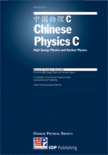
Chinese Physics C
Fostering Innovation in Experimental MethodologiesChinese Physics C is a premier, peer-reviewed journal published by IOP Publishing Ltd, dedicated to advancing knowledge in the fields of Astronomy and Astrophysics, Instrumentation, and Nuclear and High Energy Physics. With an impressive impact factor reflecting its standing in the Q1 quartile across multiple categories, this journal serves as a vital resource for researchers, professionals, and students seeking to engage with cutting-edge developments and experimental findings. Since its inception in 2008, Chinese Physics C has fostered significant collaborations and discussions within the global physics community, enabling easy access to high-quality research through its open access options. Operating from the United Kingdom with a commitment to excellence, this journal not only showcases high-impact papers but also encourages innovative methodologies and interdisciplinary approaches, solidifying its role as an essential platform for dissemination and dialogue in the rapidly evolving landscape of physics.

RADIATION MEASUREMENTS
Leading the Charge in Interdisciplinary Radiation Research.RADIATION MEASUREMENTS is a highly regarded academic journal published by Pergamon-Elsevier Science Ltd, focusing on the interdisciplinary field of radiation science and instrumentation. With an ISSN of 1350-4487 and an E-ISSN of 1879-0925, this journal aims to disseminate cutting-edge research and practical advancements from 1994 to 2024. It holds a commendable position in the Scopus rankings, being categorized in the top quartiles (Q2) for both Instrumentation and Radiation, reflecting its significance in the scientific community with a notable percentile of 64th and 59th, respectively. Although it does not offer Open Access options, the journal serves as a vital resource for researchers, professionals, and students seeking to explore innovations that shape the understanding and measurement of radiation phenomena. With a commitment to high-quality research, RADIATION MEASUREMENTS continues to contribute essential knowledge in the fields of physics and astronomy, positioning itself as a key publication for those dedicated to advancing radiation technology and its applications.

JOURNAL OF SYNCHROTRON RADIATION
Pioneering Innovations in Synchrotron TechniquesJOURNAL OF SYNCHROTRON RADIATION, an esteemed publication by the International Union of Crystallography, is a leading journal in the fields of Instrumentation, Nuclear and High Energy Physics, and Radiation. With an impressive impact factor and categorized as a Q1 journal across multiple disciplines in 2023, it demonstrates a commitment to advancing knowledge and applications in synchrotron radiation science. The journal has embraced an Open Access model since 2022, providing unrestricted access to cutting-edge research for a global audience. Published bi-monthly, JOURNAL OF SYNCHROTRON RADIATION serves as a vital platform for researchers, professionals, and students seeking to engage with the latest findings, methodologies, and innovations in synchrotron techniques and technologies. With its rich history from 1996 to 2024, it is recognized as a key resource for those aiming to push the boundaries of material science, structural biology, and beyond.
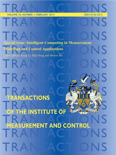
TRANSACTIONS OF THE INSTITUTE OF MEASUREMENT AND CONTROL
Pioneering Research in Instrumentation and Control SystemsTRANSACTIONS OF THE INSTITUTE OF MEASUREMENT AND CONTROL, published by SAGE Publications Ltd, is a prestigious journal that has been at the forefront of research in measurement and control since its inception in 1979. With its ISSN 0142-3312 and E-ISSN 1477-0369, this UK-based journal is indexed in reputable databases, showcasing its impact in the field, highlighted by a notable Q2 ranking in Instrumentation for 2023. The journal serves as a vital platform for scholars and practitioners alike, publishing high-quality, peer-reviewed articles that span a range of topics related to measurement technology and control systems. With an increasing focus on interdisciplinary approaches, TRANSACTIONS OF THE INSTITUTE OF MEASUREMENT AND CONTROL strives to advance the understanding and application of innovative measurement and control methodologies, making it an essential resource for academics, industry professionals, and students aiming to enhance their knowledge and expertise in this dynamic field. Although it operates under a traditional subscription model, the journal's commitment to disseminating cutting-edge research remains unwavering, inviting contributions that push the boundaries of instrumentation and control science.
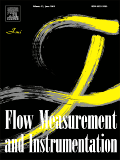
FLOW MEASUREMENT AND INSTRUMENTATION
Pioneering Insights in Instrumentation and EngineeringFLOW MEASUREMENT AND INSTRUMENTATION, published by Elsevier Science Ltd, serves as a vital resource for researchers and professionals in the fields of Instrumentation, Electrical and Electronic Engineering, Computer Science Applications, and Modeling and Simulation. With an impressive trajectory since its inception in 1989 and extending to 2024, this journal has gained a notable reputation, ranking in the upper quartiles of various categories within the 2023 Scopus metrics, reflecting its significant contribution to advancing knowledge in flow measurement technologies and methodologies. Although it does not offer Open Access options, the journal is well-regarded for its rigorous peer-review process, ensuring high-quality, impactful research dissemination. The journal's emphasis on empirical studies and innovative instrument design establishes it as an essential platform for disseminating cutting-edge findings that facilitate practical applications and inform future research directions. Positioned within the United Kingdom, it attracts a global readership dedicated to the continuous enhancement of measurement sciences and engineering innovations.
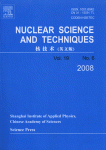
Nuclear Science and Techniques
Advancing the Frontiers of Nuclear KnowledgeNuclear Science and Techniques is a distinguished peer-reviewed journal published by Springer Singapore Pte Ltd, dedicated to advancing the fields of nuclear science and engineering. With an impressive impact factor reflected in its 2023 quartile rankings—Q2 in Nuclear and High Energy Physics and Q1 in Nuclear Energy and Engineering—the journal serves as a vital resource for researchers, professionals, and students alike. Covering a breadth of topics from nuclear physics to energy applications, it offers a platform for innovative research and developments in the nuclear domain. The journal, indexed under ISSN 1001-8042 and E-ISSN 2210-3147, aims to foster scientific exchange and collaboration within the community by publishing high-quality articles that contribute significantly to the field. Committed to maintaining an open-access ethos, it enhances visibility and accessibility of critical knowledge, making it an essential source for current insights and trends in nuclear science.
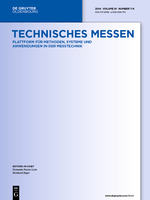
tm-Technisches Messen
Pioneering Research in Electrical and Electronic Engineeringtm-Technisches Messen is a reputable academic journal published by WALTER DE GRUYTER GMBH, focusing on the field of engineering, specifically in Electrical and Electronic Engineering and Instrumentation. With a rich history dating back to 1931, this journal serves as a critical platform for disseminating research, innovations, and developments relevant to measurement and instrumentation technologies. Despite its current quartile rankings of Q3 in Electrical and Electronic Engineering and Q4 in Instrumentation for 2023, the journal continues to attract submissions from leading researchers, offering insights that drive advancements within these fields. Researchers and practitioners can access a wealth of knowledge through this publication, fostering collaboration and sparking new ideas. Located in Berlin, Germany, the journal operates without an open-access model, making it essential for universities and institutions to play an integral role in supporting their library access to this valuable resource. As the journal continues to evolve through 2024 and beyond, it remains a significant contributor to the global discourse in measurement technologies, making it a must-read for anyone involved in these dynamic areas of study.

Optoelectronics Instrumentation and Data Processing
Driving Excellence in Instrumentation for Tomorrow's TechnologiesOptoelectronics Instrumentation and Data Processing is a cutting-edge academic journal published by Springer, dedicated to the multidisciplinary field of optoelectronics, providing a platform for researchers, professionals, and students to publish pivotal advancements in instrumentation and data processing techniques related to light-based technologies. Established in 1984, this journal has fostered the sharing of innovative research, facilitating knowledge transfer and collaboration across various scientific domains, particularly in condensed matter physics and electrical engineering. Although it currently holds a Q4 ranking in its respective categories, its open-access policy and commitment to excellence are geared towards elevating research visibility, thus encouraging contribution and dissemination of impactful findings. With a focus on promoting advancements from 2011 to 2024, this journal serves as an invaluable resource for those at the forefront of optoelectronic applications, positioning itself as a significant player within the academic community.
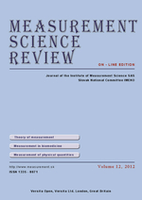
Measurement Science Review
Empowering Innovation in Measurement TechnologiesMeasurement Science Review is a distinguished open-access journal published by SCIENDO, dedicated to advancing the field of measurement science across various disciplines, including Biomedical Engineering, Control and Systems Engineering, and Instrumentation. Since its inception in 2008, it has actively contributed to the dissemination of innovative research and practices relevant to these fields, currently holding a notable Q3 ranking in its category as per the 2023 metrics. With an emphasis on robust scientific inquiry and practical applications, Measurement Science Review is positioned as an essential resource for researchers, professionals, and students seeking to enhance their understanding and expertise in measurement technologies. The journal provides an accessible platform for interdisciplinary dialogue and collaboration, making it a vital component of the academic landscape in Slovakia and beyond. Its publication track extends to 2024, ensuring timely access to cutting-edge research findings for a global audience.